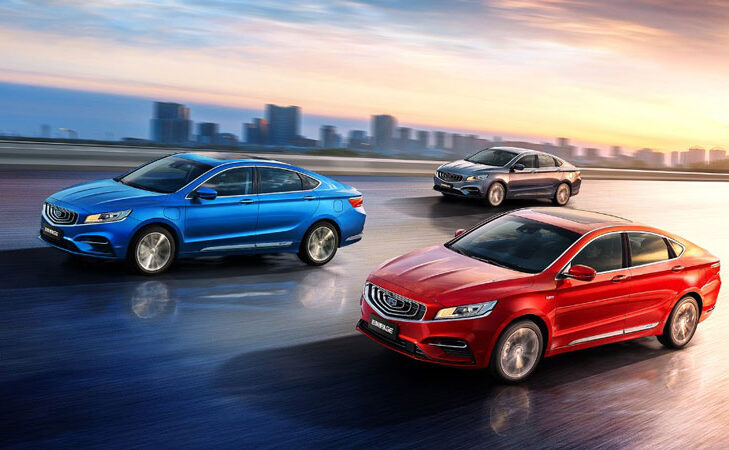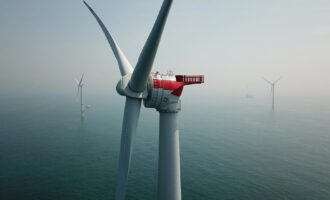
China: Rewriting the rules of the automotive industry
Will China be fully electric by 2040? It is a bold prediction. According to the International Energy Agency (IEA), China accounted for more than half of global sales of electric cars, where electric cars had a market share of 2.2% in 2017. Electric cars sold in the Chinese market more than doubled the amount delivered in the United States, the second-largest electric car market globally.
Further, the Chinese government has set an ambitious target of seven million EV sales annually by 2025. To reach this goal, the administration is handing out subsidies and tightening regulations around fossil-fuel cars.

A lot of things favor electrification in China, says the Regional Manager for Asia-Pacific of Lubrizol’s OEM Group, Keith Howard. Most significant is a government with a strong desire to not only adopt electrification but to lead the automobile “electric revolution.” China’s government is shaping the future of their automotive industry, encouraging auto manufacturers with EV quotas, credits and incentives to owners.
F+L Magazine recently spoke with Shanghai-based Howard on the hot topic of electrification in China. The Lubrizol representative confirmed a variety of EV incentives in China’s largest and wealthiest city. One simple, yet influential, example Howard cited relates to the vehicle registration process. In Shanghai, it can take more than two years to obtain a local license, allowing access to the centre of the city — by way of a monthly lottery. Demand far outstrips supply and currently chances are about 5% each time, says Howard. However, residents purchasing a plug-in hybrid or fully electric car (classed as a New Energy Vehicle or NEV) can bypass the waiting list with immediate registration, a significant motivation, while saving significantly on registration fees. Howard says this scheme is one reason we see increasing numbers of plug-in vehicles, sporting their distinctive green number plates, throughout Shanghai. There are similar incentive schemes in China’s other big cities, confirms Howard.
China is experiencing significant momentum in NEV sales. Howard believes that, in addition to the government’s desire for China to lead in this area, this is driven by pressure to curb pollution, improving technology, more competitive pricing and swelling positive media attention enjoyed by NEVs. It’s important to note, however, that the internal combustion engine, combined with varying levels of electrification, will still power the majority of China’s cars for at least 20 years.

A significant barrier to the adoption of electric vehicles in many countries is ‘range anxiety.’ To the uninitiated, this represents nervousness around distances travelled before requiring a recharge. With limited EV charging infrastructure, drivers may become stranded. Though, battery technology is improving, with leading EV manufacturers such as Tesla reporting ranges of 400-500 kilometers (km). Ongoing battery technology improvements will eventually see an end to range anxiety, though it’s impossible to predict when technology breakthroughs from numerous research programs in this area will happen. Of course, if you have a plug-in hybrid you can revert back to your ICE in times of trouble.
While Tesla has recently announced plans to build an EV plant in China, the country also embraces a proliferation of local domestic manufacturers who are mainly selling small, compact, cheaper EVs. According to Howard, most of these “cheap and cheerful” cars have a much lower range, usually around 100 km at most, and are used in local car sharing schemes, similar to Zipcar TM in the United States. Despite the proliferation of low-range vehicles, Howard believes that the large sums invested in battery research will eventually provide the required growth in range, though not within the next few years.
The real threshold will be when EV of comparable performance costs less to make than a traditional ICE vehicle. This will also be driven by battery developments. EVs will have maintenance cost advantages due to their relative simplicity. There are estimates of 80 times more moving parts in a traditional ICE powertrain versus a battery electric vehicle (BEV). This change will provide real acceleration as EV technology will be self-sustainable as battery prices decline, meaning it won’t require any subsidies to encourage sales.

Howard, a trained automotive engineer, has been with Lubrizol since 1993, following 14 years with Leyland DAF Trucks. Electrification is by far the largest automotive disruption in his lengthy career.
Despite a clear ramp up by major players and regular announcements on EVs, perhaps strangely, some auto manufacturers are betting on alternative technology. Toyota unveiled the Mirai, one of the first hydrogen fuel cell vehicles, in November 2014, and as of December 2017 has sold 5,300 units worldwide. The top selling markets for the Mirai are the United States (2,900 units), Japan (2,100) and Europe (200).
Mazda, on the other hand, has launched its hybrid gasoline and diesel vehicle. The company’s website claims the SKYACTIV-X gasoline engine combines the free-revving characteristics of a gasoline engine with the fuel efficiency, torque and fast initial response of a diesel unit. The technology is very new and will certainly bring with it new challenges to the lubricants industry, though Howard proposes it remains to be seen if this technology will flourish. Whatever happens, he says, the end game is electric as battery technology continues to improve and infrastructure is built up, but this will be decades from now. In the meantime the path forward is ICE based with increasing levels of electrification from mild hybrids to plugins and range extended EVs.
We already have gasoline, electric charging and natural gas infrastructure, can you add hydrogen structure on top to cope with a big fleet fuel cell? “I don’t think so, I believe fuel cells will remain a niche as a vehicle power unit,” says Howard. By May 2016, there were only approximately 80 hydrogen fuelling stations in Japan. While confident on the future of electrification, the Lubrizol representative admits uncertainty concerning crowded Chinese cities like Shanghai and Beijing where space to park a car is limited, let alone charge one. The sharing economy is already blossoming in China, and Howard imagines significant opportunity exists in places like Shanghai for car sharing. Combining autonomy, electrification and the sharing economy — that would be the end game, he says.

Questions also remain about the impact an exponential increase in high power charging will have on power plants. Howard doubts base loads or peak loads have been modeled by power companies. When everyone comes home and switches their car to charge at the same time — what happens? Some form of grid smart control will be necessary to avoid overloading. A further consideration is where the power is coming from. It needs to be clean energy — not coal, says Howard. China currently generates most of its electricity from coal.
The growing popularity of EVs clearly has implications for an additive company like Lubrizol where fuels and lubricant additives are a core business. Fully electric vehicles will use a small amount of transmission oil. There won’t be any engine oil at all. So how do Lubrizol, other engine oil additive companies and lubricant manufacturers adapt?
In addition to investing in the development of fluids to suit the needs of hybrids and electric vehicles Lubrizol is fortunate to possess a significant volume of business that is not related to the traditional ICE-based powertrain. In the automotive area Lubrizol has products for vehicle interior and exterior applications. Additionally Lubrizol has a whole range of non-automotive technologies including industrial fluids, life sciences, cosmetics, healthcare, plus an advanced materials arm — which will likely increase in significance as time goes by. Smart investments have clearly minimised the risk for Lubrizol. Others may not be so fortunate.
Regardless, Howard envisages these changes are not going to happen overnight. The ICE has still got another 20 years of production in China at least, and even after that there will be service-related applications, he says. While commercial vehicles will be electric “eventually,” Howard predicts it will take a lot longer for these vehicles to make the switch. “Every kilo of battery takes a kilo off the payload,” he says, and range/charging time is an issue, especially in long haul. The diesel engine will remain the power unit of choice for commercial vehicles well into the future, he believes.
Engine oils will eventually disappear from passenger cars first, though Howard believes we are looking far beyond 2040 before they are gone altogether in China. Potentially, commercial vehicles could take a further 15-20 years, he says.







